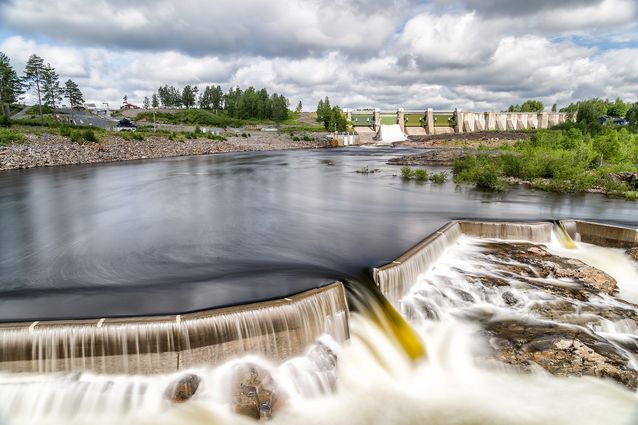It appears that there is no going back to the days of cheap (fossil fuel) energy: all permanent economic activity is based on trust and trust in the fossil fuel energy market has been lost. It will take time to build the trust back and it remains to be seen, how and when this will happen. As a side effect of the lost trust, the industrial world is now increasingly moving into electricity and hydrogen, as evidenced by the major investments of global corporations.
Filling the tank with petrol or putting the lights on in your house results in an ever-growing bill. It's not uncommon to hear disgruntled utterances about energy prices or wishful remarks that prices will return to normal. Save your tears, stop the wishful thinking, and decide instead to start using energy more efficiently.
World trade in fossil energy is built on trust. Even if Russia's invasion of Ukraine ended tomorrow, the energy market would not normalize immediately. The price tags on key energy investments are enormous and investment decisions assume that they will be paid back over the next 15-30 years. Russia was the world’s second largest producer of crude oil and natural gas in 2019. [1] Its production will always greatly impact oil prices. During the war, Russia reduced its exports to Europe for political reasons, especially natural gas. Many other oil producers have been unwilling to rapidly increase their own oil production. This, if nothing else, has destroyed confidence in the fossil fuel market. No company can make major new investment decisions when crude oil prices are soaring this year and may continue to rise next year.
Without new fossil fuel investment, there is no point in hoping that the prices at the pump or energy counter will fall significantly. There is little reason to believe we could even estimate the price level of energy in the future. The baker who heats his ovens with natural gas, or the fertilizer manufacturer who needs ammonia to produce hydrogen from natural gas using steam methane reforming (SMR), will suffer from the same lack of foresight. Given that fossil energy producers cannot be relied upon, the energy revolution has been set in motion across all industrial sectors.

Plenty of investment is available for renewable energy
Simultaneously, the price of renewable energy is falling fast. According to the International Energy Agency (IEA), renewable energy is already cheaper than fossil fuel energy in most parts of the world. Although a new oil well would pay off in the short term, investors know that in 10 years a more sustainable investment will certainly have been in wind power or solar panels. Investors' money is well spent on renewable energy in the market. Additions to renewable electricity capacity were at another record high in 2021. [2]
The nature of investments has also changed, particularly in the hydrogen economy. In previous years, money was primarily channeled into product development and attractive start-ups. This year, there have also been several large-scale industrial projects – which translate to big business.
British oil and gas giant BP has agreed to buy a 40.5% stake in the Asian Renewable Energy Hub (AREH), to be built in Pilbara, Western Australia. [3] The total value of the project is USD 36 billion. The project will install 26 gigawatts of solar and wind power capacity over an area of 6,500 square kilometers, which is equivalent to 90 terawatt hours of annual electricity production. The renewable energy output will be used to produce hydrogen through electrolysis. When fully built, the project will produce around 1.6 million tonnes of emission-free hydrogen or 9 million tonnes of ammonia per year. [4]
TotalEnergies has also entered a major project in India. It acquired a 25% stake in Adani New Industries Limited (ANIL). ANIL is prepared to invest up to USD 50 billion over the next 10 years to build a zero-emission hydrogen production capacity of 1 million tonnes per year by 2030. This project will result in a renewable energy generation capacity of 30 gigawatts. [5]
An announcement of a similar single large investment in renewable energy is expected shortly from Shell.
Infrastructure projects underway
Even for those involved in the hydrogen business, it can be difficult to grasp how quickly many infrastructure projects are taking off. These projects are not necessarily driven by the public sector but are often market-driven.
The European Hydrogen Backbone (EHB) initiative involves thirty-one gas infrastructure operators. In June, the EHB published an updated vision for building hydrogen infrastructure covering virtually all of Europe. [6]
The first parts of the envisioned hydrogen infrastructure network have already started to move towards practical implementation. It has been noteworthy to follow the Nordic Hydrogen Route (NHR) project as it is initiated. The NHR is an initiative of Gasgrid Finland and Nordion Energi to build a cross-border hydrogen infrastructure in the Gulf of Bothnia to create an open hydrogen market in the northern Baltic Sea by 2030. The project will build a 1,000 km long hydrogen gas pipeline linking, among other things, Sweden's most important steel industrial area with Finland's most important wind power production area. [7] Following the launch of the NHR project, Finland has announced plans to build a national hydrogen infrastructure and the Netherlands has announced similar national plans.

Industry needs renewable electricity
While most citizens experience the changing times most acutely at the petrol pump, the primary drivers of the energy revolution remain elsewhere.
Industry consumes around 150 million terajoules of energy each year (2017), which is more than any other sector. The total energy consumption of industry is estimated to be 1.5 times larger than the amount of electricity produced globally. Only a fifth of the energy consumed by industry is electricity. [8] The use of fuel - for example, burning oil - accounts for almost half of industrial energy consumption. This includes the generation of heat in processes such as drying, melting, and cracking. Around a third of industrial fossil fuel consumption is in their use as raw materials, for example, to make plastics from oil.
McKinsey estimates that almost 50% of the fuel used by industrial companies could be replaced by electricity using currently available technologies. This includes all the energy needed to generate thermal energy for industrial processes up to 1,000 degrees Celsius. Electrification of industrial processes requiring heat of up to 1,000°C also does not typically require a fundamental change in industrial processes, but rather the replacement of a conventional fuel burning device such as a boiler or furnace with an electric device.
Among the most common industrial equipment in which fuel is used to generate energy - such as boilers and furnaces - fuel costs over the lifetime of the equipment account for more than ten times the capital costs. Although these processes could have been electrified to a greater extent earlier, the affordability of fossil fuels has disincentivized electrification. Currently, the unpredictability and magnitude of fossil fuel prices are driving industrial sectors to switch to cheaper renewable energy.

Industry also requires emission-free hydrogen
Industrial applications requiring heat above 1,000°C require a non-electric solution, which may be hydrogen. The metal industry in northern Sweden is already switching to hydrogen. As a well-known example, in 2021, HYBRIT already delivered its first shipments of fossil-free steel to its customers. These customers will gain significant added value from the zero-emission steel they sell in their final products to end customers. [9] Profitability calculations of hydrogen-based production were positive even before the price of coke reached its all-time high in 2021, prior to the war in Ukraine. [10] Since then, coke prices have continued to rise. In these industrial cases, hydrogen not only provides heat to the process but similarly replaces the need for coke as hydrogen chemically reduces iron ore, i.e., removes oxygen from it.
The energy revolution is now inevitably driven by the necessity to replace fossil fuels as raw materials. Russia's invasion of Ukraine has devastated the world’s ammonia trade, among other supply chains. China is the world's largest ammonia producer, but Russia is the second largest. Ammonia has interesting new applications, for example as a marine fuel. However, ammonia is currently in short supply as a raw material for nitrogen fertilizers, among other products. When ammonia imports from Russia to the West ceased, many factories stopped producing essential fertilizers and prices peaked when production resumed. Ammonia produced near the fertilizer manufacturing site using zero-emission hydrogen is a promising solution to this problem.
Climate change continues
While the energy transition is forced forward by changing profitability calculations, the primary reason we should make the transition remains to stop climate change.
This summer, Southern Europe has once again recorded record temperatures. The Western states of India have regularly recorded temperatures above 40°C since March this year. [11] Increasingly more areas of the globe are becoming uninhabitable. It is becoming increasingly difficult to feed humanity. The loss of natural biodiversity and resilience continues, and sea levels continue to rise. Realizing the energy transition is not only important for industry but also essential for our survival.
[1] https://www.reuters.com/business/sustainable-business/swedens-hybrit-delivers-worlds-first-fossil-free-steel-2021-08-18/
[2] https://www.mckinsey.com/industries/metals-and-mining/our-insights/high-coking-coal-prices-provide-glimpse-into-steelmakings-future
[3] https://www.hs.fi/ulkomaat/art-2000008854913.html
[4] https://www.mckinsey.com/industries/electric-power-and-natural-gas/our-insights/plugging-in-what-electrification-can-do-for-industry
[5] https://www.iea.org/reports/renewable-energy-market-update-may-2022
[6] https://www.power-technology.com/news/bp-asian-renewable-energy/
[7] https://www.bloomberg.com/news/articles/2022-06-19/big-oil-bets-that-green-hydrogen-is-the-future-of-energy?sref=RXJCmJYe
[8] https://totalenergies.com/media/news/press-releases/india-totalenergies-and-adani-join-forces-create-world-class-green
[9] https://ehb.eu/
[10] https://nordichydrogenroute.com/
[11] https://www.bp.com/content/dam/bp/business-sites/en/global/corporate/pdfs/energy-economics/statistical-review/bp-stats-review-2020-full-report.pdf
